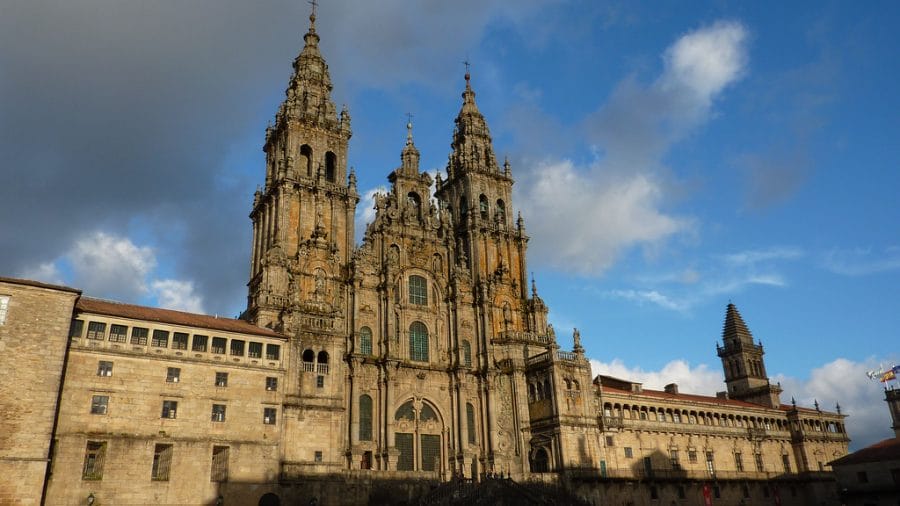The Camino Frances is the “classic Way of St. James” and leads from Saint-Jean-Pied-de-Port to Santiago de Compostela. Here are some wonderful stages on the most popular last 160 kilometers of this famous pilgrimage route. On this section, Hillwalk Tours offers self-guided Camino walking tours, including accommodation and luggage transport. So here are our Camino Frances best stages.
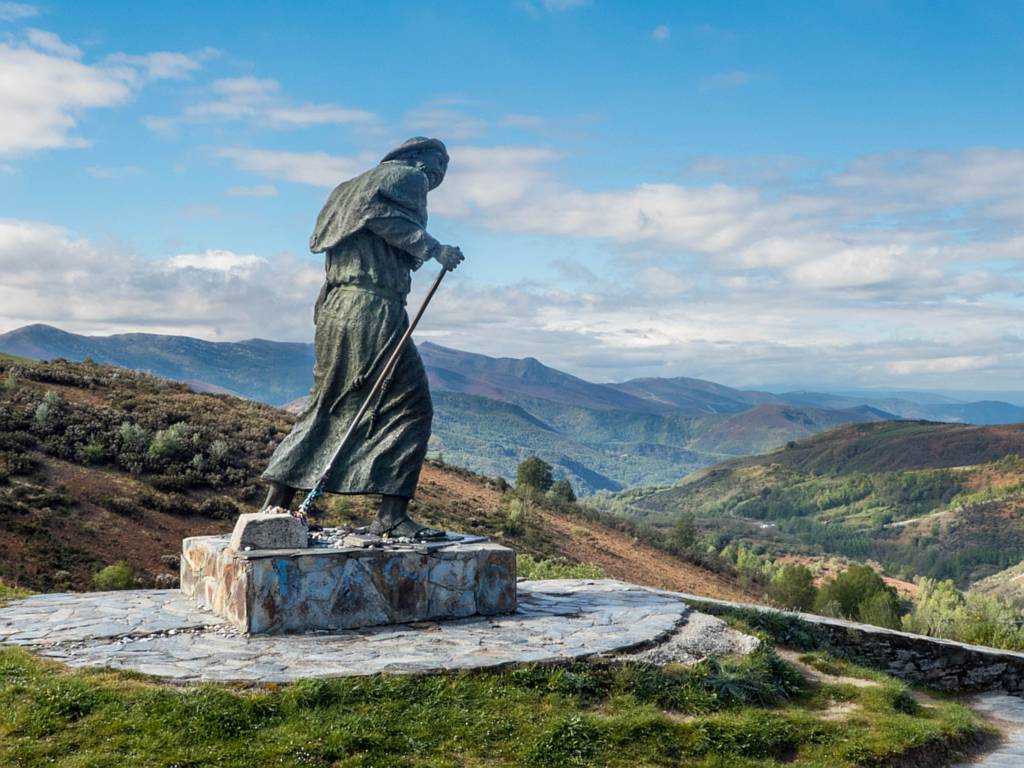
O Cebreiro – Triacastela
The Hillwalk Tours hikes on the Camino de Santiago start strategically in O Cebreiro. The village is well worth a visit, because only in this part of Galicia can you find pallozas, traditionally constructed stone houses that were built here before Roman times.
At 1,250 meters above sea level, the Galician village is also quite high. The fantastic view on the descent from O Cebreiro reward you right from the start.
On the Rochus Höhe (Alto de San Roque) you will encounter the larger-than-life statue of a pilgrim pictured above.
When you arrive in Triacastela, you can remember an old tradition: in the nearby limestone quarry, pilgrims used to take stones with them to have them burned in Castañeda. They were then used to build the Cathedral of Santiago de Compostela.
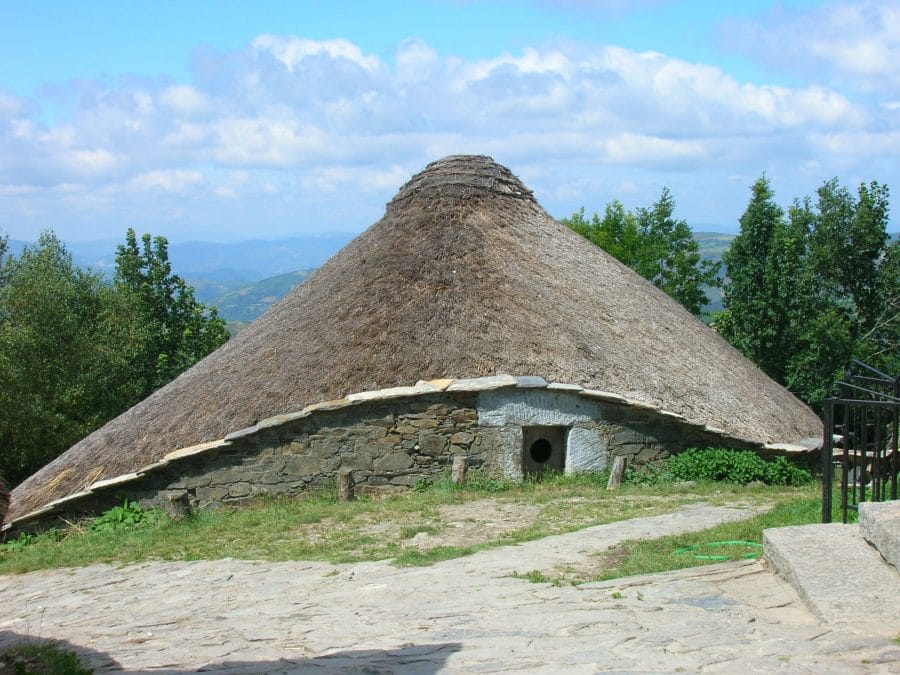
Triacastela – Sarria: The Monastery of Samos
Two hours past Triacastela you will come across the famous Samos Monastery. It was founded in the sixth century by Martin of Braga.
Anyone interested in history and architecture can not miss out on visiting this imposing building. Through the continuous use in different centuries it combines architectural styles such as late Gothic, Renaissance and Baroque.
If you value natural monuments and rare trees, you should also visit the Capilla des Salvador / Ciprés. Not only is the chapel from the 9th-10th century impressive but the almost thousand-year-old cypress tree that looms over it is a special sight.

Sarria – Portomarin
Sarria itself is a lively meeting place for hikers on the Camino Frances. It’s no wonder that for a very long time pilgrims have set out from here to walk the last 100km and earn the pilgrimage certificate (called Compostela).
In Barbadelo, it is worth stopping at the Romanesque Church of St. James, Igrexa de Santiago de Barbadelo. There is a lot to discover on the ornate portals: not only animals and people, but also plant motifs and even scallops.
When you reach Brea, a stone marker shows you that you are on the last 100 kilometers of the Camino de Santiago.
On this section of the Camino Frances you will now pass many traditional Galician villages of Celtic origin and cross the Miño River.
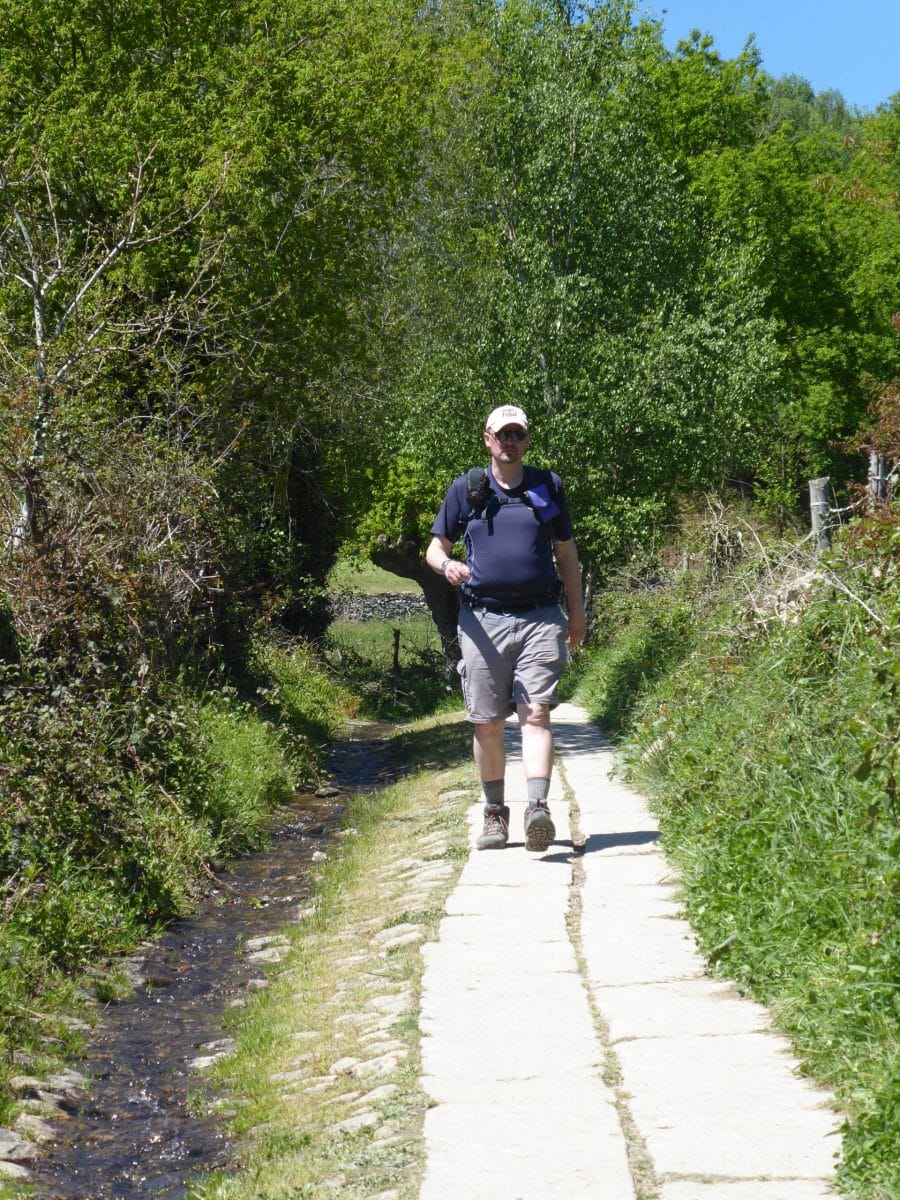
Palas de Rei – Melide
Palas de Rei is one of those places whose name is misleading. Because there is neither a “royal palace” to marvel at, nor is there any clear evidence that this 3000-soul village was ever a royal seat.
You travel from Palas de Rei to Melide via quiet country roads. Anyone who arrives in the town of Melide on a Sunday can consider themselves lucky. At the famous weekly market, farmers offer local products and you can try specialties from the region at food stands.
On weekdays you can stop in one of the typical pulperías and try fresh squid there. Pulpo means octopus in Spanish and on the coasts of Galicia it is eaten with olive oil and smoked paprika powder.
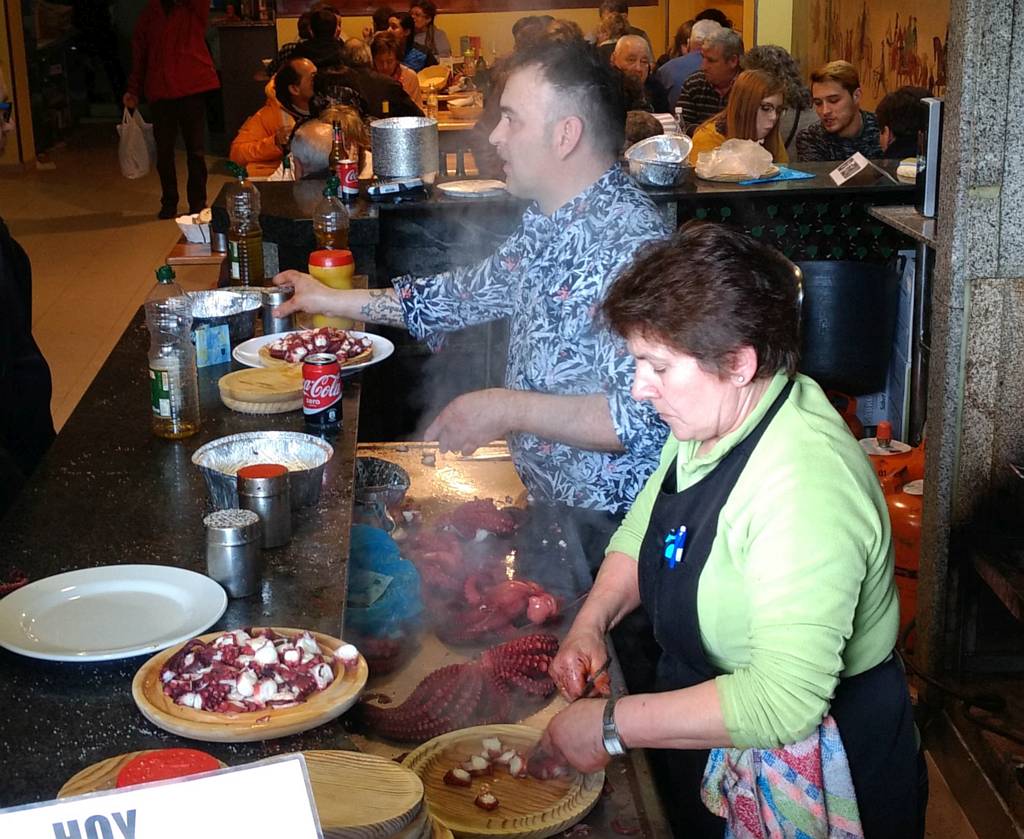
Melide – Arzúa
You get from Melide to Arzúa on quiet forest paths and pass Castañeda on the way. If you took a stone with you in Triacastela, you could now have it burned in Castañeda like the pilgrims did many centuries ago. At that time, the pilgrimage was also used to transport the raw materials for the construction of the Cathedral of Santiago de Compostela.
After such exertions, or even thinking about them, you can enjoy another delicacy in Arzúa. This lovely place on the Way of St. James is famous for its tasty Laiber cheese.
In Ribadiso de Baixo you can admire a stone bridge over which countless pilgrims have crossed the Rio Iso since the 15th century and headed for the nearby pilgrimage hostels.
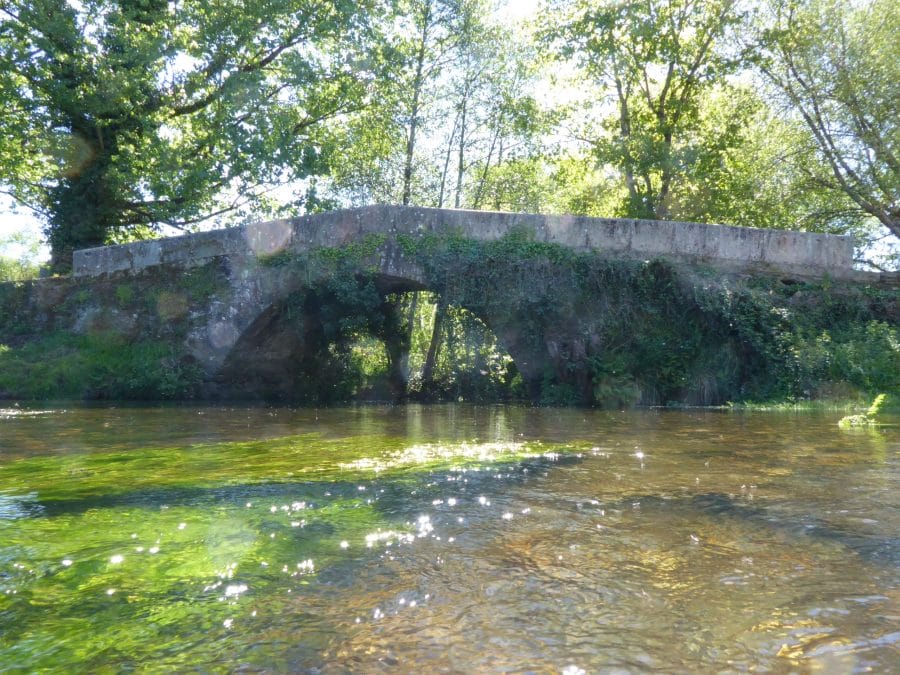
Arzúa – Santiago de Compostela
The route from Arzúa to Santiago de Compostela is the last section on the Camino Frances and can be hiked in different stages. While very sporty people conquer the 39km in one day, others may make another stop in this enchanting rural area in Galicia.
In Santiago de Compostela itself, the cathedral in particular attracts pilgrims who end their pilgrimage there with a mass. It used to be believed that this was accompanied by remission of sin.
But even those who did not walk the Way of St. James for religious reasons will appreciate the architectural beauty of the old town, which is a UNESCO World Heritage Site. The festive atmosphere of the flock of pilgrims makes this city a very special place. Because everyone who arrives here on the Camino is united by a common spirit, even if they have taken different paths to arrive there.
